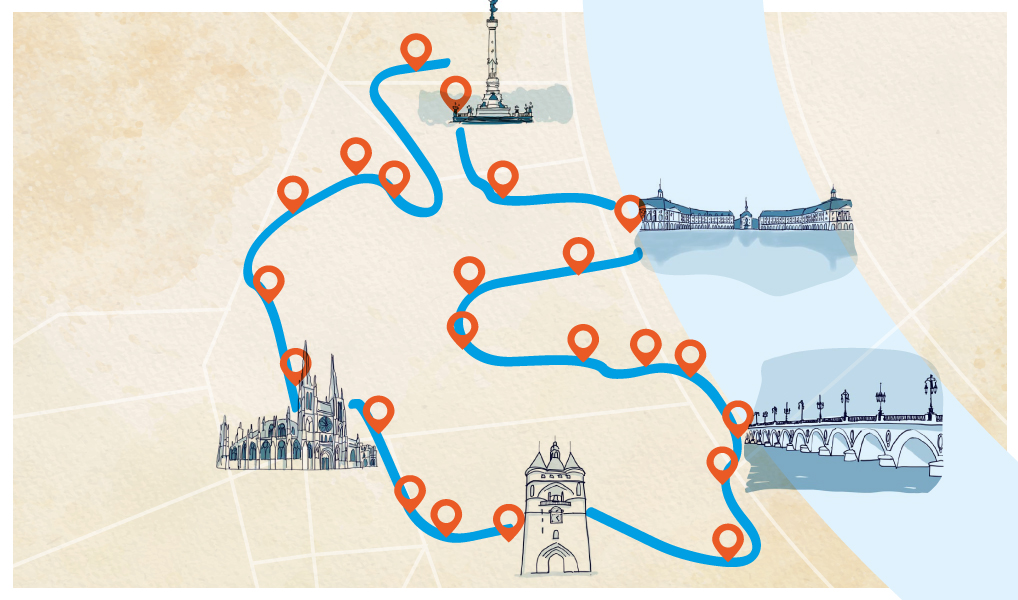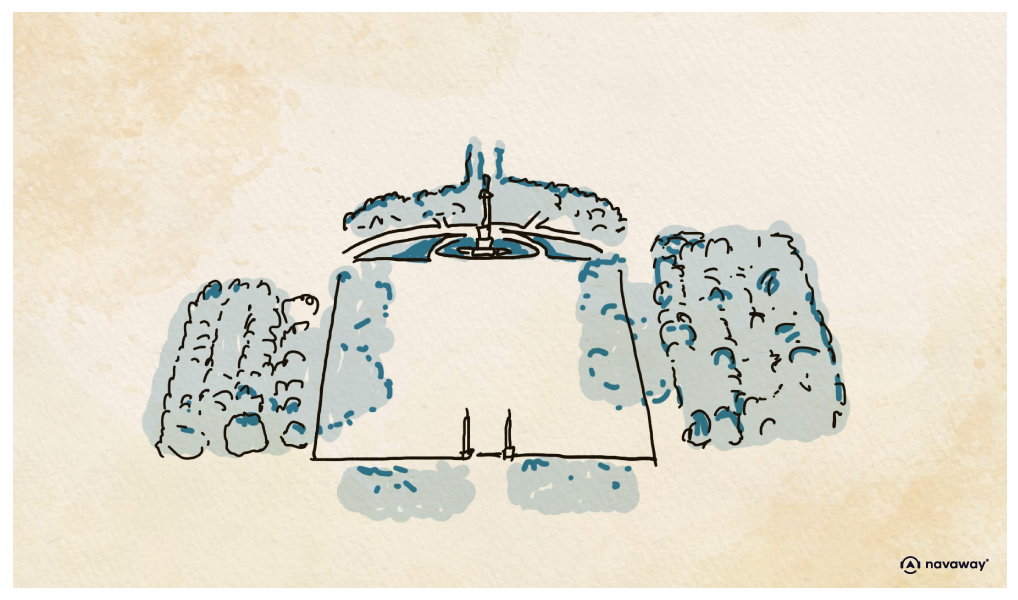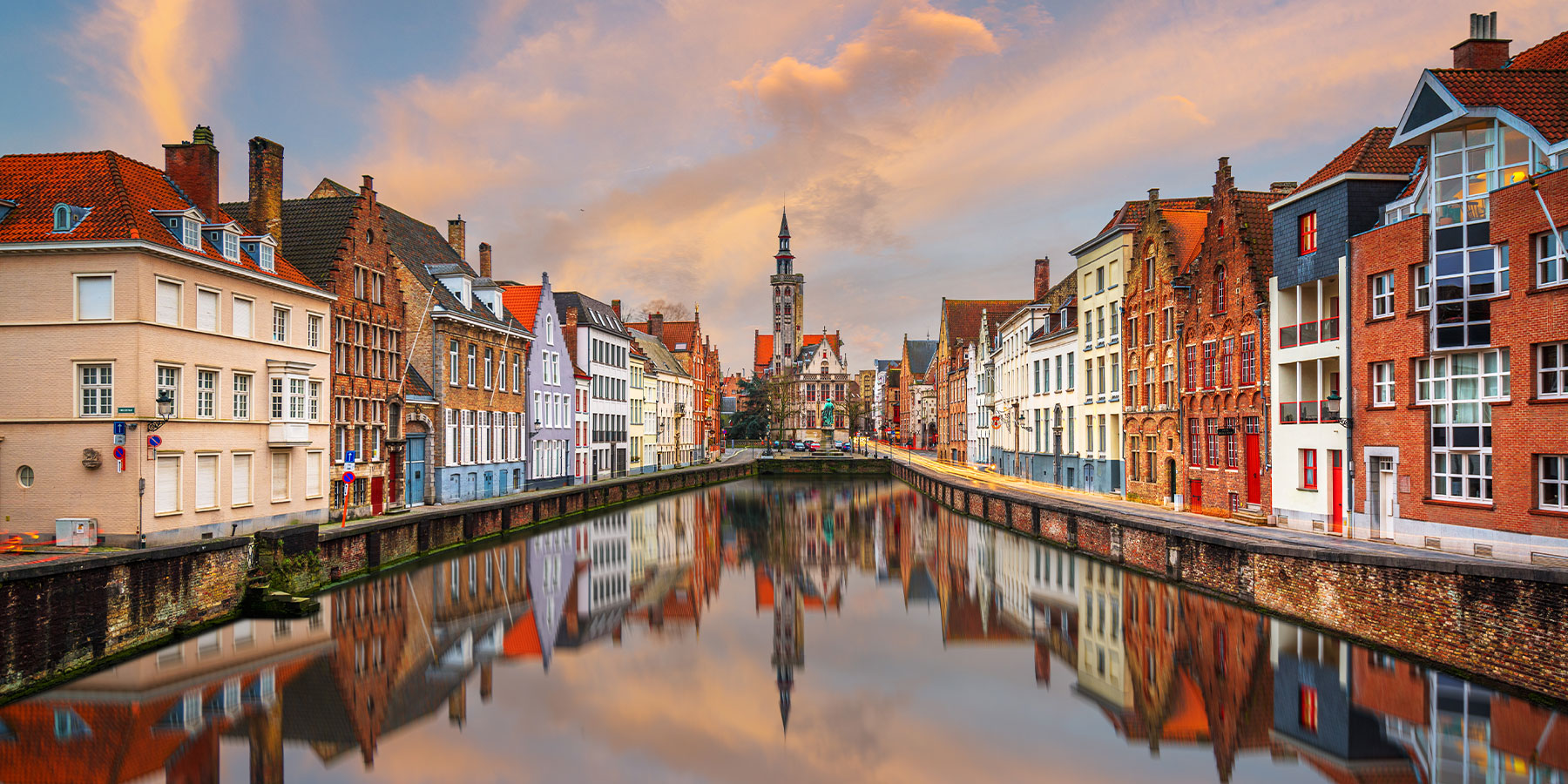
Quincunx Esplanade

This point of interest is available as audio on the tour: Visit Bordeaux, The Sleeping Beauty
We’re on Quincunx Square, Europe’s largest square for that matter! It covers an area of 12 hectares, which is about the size of ten football pitches! Since its creation, the square has been a regular venue for major events of all kinds! From Bordeaux’s first wine festival, to the Euro fan zone, all the way to circuses and fairs, the esplanade you see around you is regularly crowded with thousands of people! It is named after the staggered rows of trees that take a Quincunx shape. If you’re not sure what that means, just think of the dots representing the number 5 on the face of a dice. From the center of the esplanade, you may notices that it its flanked on both sides by two smiling, 4m high statues, of Montaigne and Montesquieu. These figures, whose names you will regularly encounter as you stroll along the streets, are emblematic of Bordeaux. In fact, They are often referred to as the ‘3Ms of Bordeaux’, for the three illustrious figures born in the region: Montaigne, Montesquieu, and Mauriac.The reason why the Quincunx square is so large, is because in the past centuries, it was host to the massive Trompette castle. This former fortress, which no longer exists, was built in the middle of the 15th century by Charles VII, King of France, after the Hundred Years’ War. It was designed to protect the town while keeping an eye on the Bordelais, who had only recently joined the kingdom of France after a 300 years domination of the Duchy of Acquitaine by the English. The King’s mistrust proved to be well-founded, as the Bordelais repeatedly staged rebellions against French royal authority. In fact, even 2 centuries later, it is clear that Louis XIV still did not entirely trust them. He commissioned his famous military engineer Vauban to improve the fortifications of Trompette castle, transforming it into a bastioned citadel with cannons pointing towards the town.Oh, how considerate of him! By the 18th century, the town was flourishing and the climate was no longer one of rebellion. In parallel the Chartrons district, epicentre of commercial activity in the north of the city, was also expanding. So, in addition to being useless, the castle sold by Louis XVI to the municipality, was also becoming a nuisance. By 1782, it was decided that the Bordeaux fortress should be demolished. The work lasted until 1816 and led to the creation of the Quincunx square, playing a major role in the life of the people of Bordeaux. Let’s cross the square to take a closer look at the two columns standing on the banks of the Garonne.


Discover Bordeaux with app
An interactive guide through the most beautiful streets, squares, and districts
29 fun audioguides full of historical facts, anecdotes, and legends





Comments